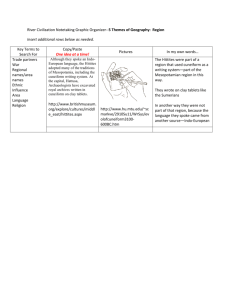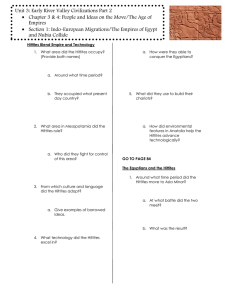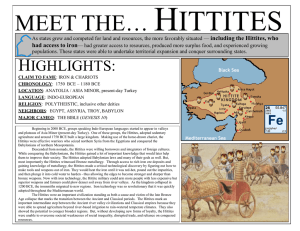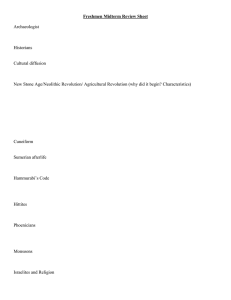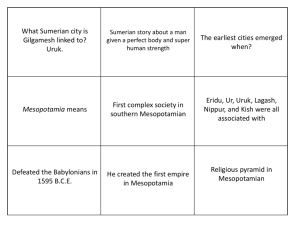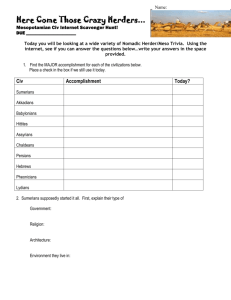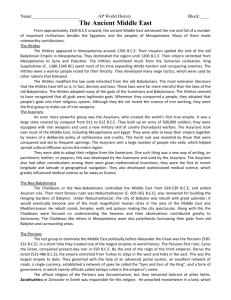Hittites: Ancient Anatolia History
advertisement
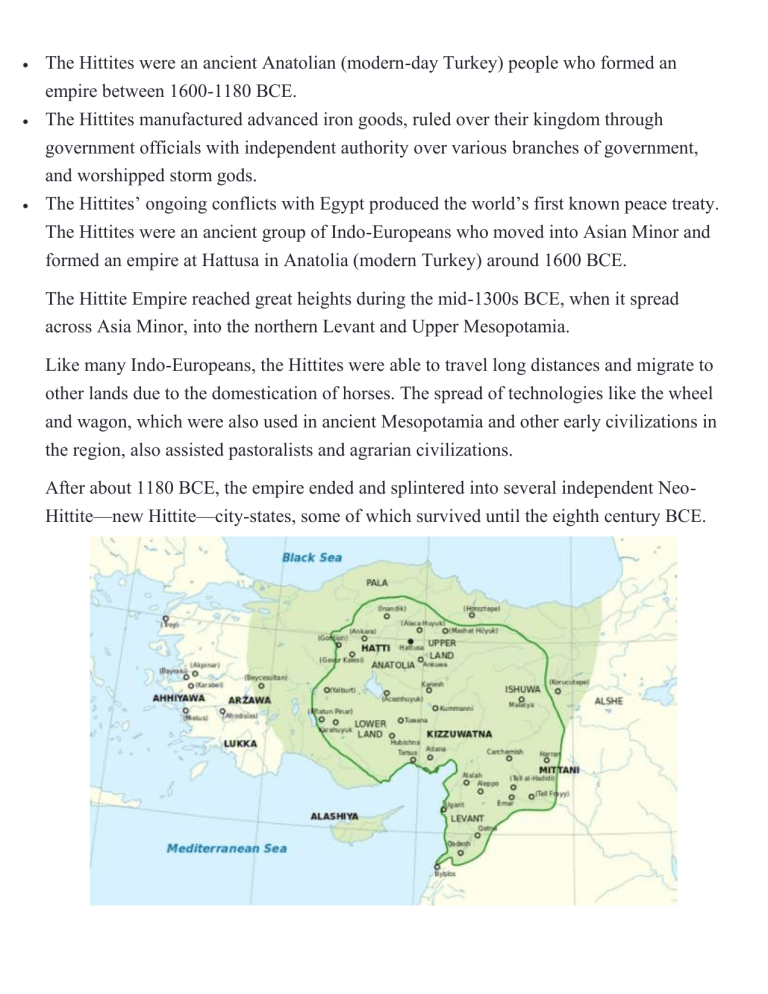
The Hittites were an ancient Anatolian (modern-day Turkey) people who formed an empire between 1600-1180 BCE. The Hittites manufactured advanced iron goods, ruled over their kingdom through government officials with independent authority over various branches of government, and worshipped storm gods. The Hittites’ ongoing conflicts with Egypt produced the world’s first known peace treaty. The Hittites were an ancient group of Indo-Europeans who moved into Asian Minor and formed an empire at Hattusa in Anatolia (modern Turkey) around 1600 BCE. The Hittite Empire reached great heights during the mid-1300s BCE, when it spread across Asia Minor, into the northern Levant and Upper Mesopotamia. Like many Indo-Europeans, the Hittites were able to travel long distances and migrate to other lands due to the domestication of horses. The spread of technologies like the wheel and wagon, which were also used in ancient Mesopotamia and other early civilizations in the region, also assisted pastoralists and agrarian civilizations. After about 1180 BCE, the empire ended and splintered into several independent NeoHittite—new Hittite—city-states, some of which survived until the eighth century BCE. Culture The Hittite language was a member of Indo-European, a family of related languages that today are widely spoken in the Americas, Europe, and Western and Southern Asia.^11start superscript, 1, end superscript Hittites are so named because of their initial identification with the Biblical Hittites, according to nineteenth-century archaeology. The Hittites are usually referred to as a people living among the Israelites. Although their civilization thrived during the Bronze Age, starting around 3000 BCE, the Hittites were pioneers of the Iron Age and began manufacturing iron artifacts around 1400 BCE. This is significant because the Hittites’ use of iron and steel created tools and weapons that were more efficient than those made of bronze. A couple of theories exist about how the Hittites developed this technology. Some scholars believe the Hittites had been experimenting with metalworking for years, eventually leading them to discover a smelting process that would melt iron, which melts at a higher temperature than other metals like copper or tin. It’s also possible that the Hittites learned some of this technology from peoples in the Zagros Mountains in western Iran. The Hittites’ trading partners in Assyria and parts of the Egyptian empire had a high demand for iron products.^22start superscript, 2, end superscript After 1180 BCE, amid general turmoil in the Levant with the sudden arrival of the Sea Peoples—people of unknown nationality who used ships to raid Mediterranean and Egyptian cities—the kingdom scattered into several independent Neo-Hittite citystates.^33start superscript, 3, end superscript The history of the Hittite civilization is known mostly from cuneiform texts found in the area of their former kingdom and from diplomatic and commercial mail found in archives in Egypt and the Middle East. The cuneiform writing suggests that the Hittites had some connection with Mesopotamian empires, either through direct communication or through the Hittites’ conquest of another central-Anatolian group, the Hatti, who had connections to the Sumerians—a Mesopotamian empire. Either way, Mesopotamians’ writing technology was transferred to the Hittites. Government The head of the Hittite state was the king, followed by the heir-apparent—one of the king’s offspring born into the position of succeeding him. Some officials, however, exercised independent authority over various branches of the government, so the king did not control all aspects of the kingdom. For example, the Chief of the Royal Bodyguards, the Chief of the Scribes—who was in charge of bureaucracy—and even the Chief of the Wine Stewards! The actual day-to-day life and culture of the Hittites is mysterious because the written documents from this culture deal mainly with the kings and their campaigns. It is known that the Hittites wrote using Akkadian script but in their own Indo-European language and used cylinder seals to sign documents and mark property as people did throughout Mesopotamia, suggesting a link between the two cultures. However, Hittites may have learned about Mesopotamian customs through the Hatti, an Anatolian people the Hittites conquered, who had prior connections to Sumer in Mesopotamia. The details of Hittite life and culture we’ve learned seem to be slight variations on those of the Hatti. But we don’t know the exact nature of the relationship between these two groups given the small number of primary sources that have been found.^44start superscript, 4, end superscript Religion Storm gods were prominent in the Hittite pantheon—the set of all the gods in a polytheistic religion. Tarhunt was referred to as The Conqueror, The King of Kummiya, King of Heaven, and Lord of the land of Hatti. He was the god of battle and victory, especially against foreign powers. This might indicate that the Hittites placed value on military might. World history project Done By: Fares AlGhamdi Teacher: Mr. Farooq Grade: 10
